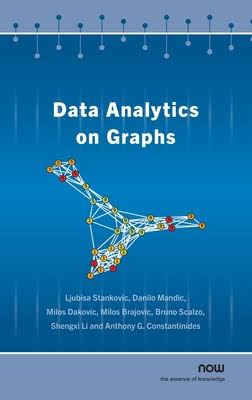Today we have our second conversation with Bernard Lee, who’s the CEO and founder of HedgeSPA, headquartered in Singapore, an investment management firm, and he’s going to talk about in a little bit more detail. In our first interview, we had a general overview of the history of the company and Bernard, today, he’s going to be a little bit more specific about the unique investment approach that they’re taking.
Script of Interview
Interviewee Mr. Bernard Lee (BL)
Position Founder & CEO
Company name HedgeSPA
Company website URL https://www.hedgespa.com/
Interviewer John D. Evans, CFA (JE)
Interview conducted on 2nd April 2021
JE: Okay, good afternoon to all the viewers. Today we have our second conversation with Bernard Lee, who’s the CEO and founder of HedgeSPA, headquartered in Singapore, an investment management firm, and he’s going to talk about in a little bit more detail. In our first interview, we had a general overview of the history of the company and Bernard, today, he’s going to be a little bit more specific about the unique investment approach that they’re taking. So, welcome, Bernard, nice to have you back again.
BL: Thank you, okay.
JE: Tell us what are the traditional approaches to Investment Management taken by your competitors, what has that been historically and how is yours different?
BL: Okay, so I assume that you mean the traditional investment management workflow used by other competitors of investment analytic solutions?
JE: Correct.
BL: Similar to us, so the traditional investment processes may have a few steps: asset selection, portfolio construction or rebalancing, decisions execution and finally reporting. Our solution follows a very similar process. There are a few things that we’ve noticed with our competitors’ platforms. First, most solutions tend not to take a holistic approach. For example, they may only focus on asset allocation, then you have to fit the selected asset into the asset allocation model. That does not work well in practice. In other words, you should consider whether there is favorable asset or not in the preferred sector, before increasing the allocation to that sector. Of course, the barrier to entry is much higher for vendors who take a more holistic approach then instead of like, you know, just building one step at a time. The second point is that many providers rely on daily position feeds from upstream and do not have what we call a ‘transaction engine’. In other words, as soon as that upstream feed, let’s just say it’s from a broker or private bank, as long as this feed is broken, which happens quite a few times during the lockdown, most everything downstream is broken accordingly. And third, and finally, most systems can only work from a relatively rigid, well defined set of data. They are not designed to find signals from as much data that is available to the user, or even understand unstructured data such as news and social media. That’s the very nature of financial data, unfortunately, to our competitors’ systems that are often built by technologists, who are simply following a specific specification mechanically. So, in summary, our competitors tend to build traditional approaches based on historical volatility, versus what we are doing involves integrating historical fundamental data, as well as news and sentiment from all available sources. So fundamentally, the approach is different. What we have built requires a certain amount of deep tech, as well as time and effort, so that should differentiate us from other players because building this requires significant upfront investment. Because of the cost and the development time, we do not believe that, that there will be more than a very small number of players who can offer anything comparable.
JE: Okay, that’s interesting. Having taught in a more traditional approach to investment management, I can relate to the difference between structured and unstructured data. All of our analytics were based on security prices and how to formally integrate news feeds into that was just some of the things that we didn’t go into. So, you’ve got a different approach. I think it’s referred to as graph theoretic models, give the viewers an overview of what that is all about.
BL: So, on top of the more sort of traditional approaches, we at HedgeSPA are looking for more effective ways to work with the younger generation of investors. I think they are poised to essentially disrupt the traditional thinking in the investment industry and a few things we have noticed about them are the following. First, these so-called Generation Z investors want to be in the driver’s
seat. Second, they often demand some kind of a social element, like, for instance, scanning the posts of fellow investors by keeping track of articles and posts, which particular investor may like. We saw that very much with GameStop, right. And then the third component is that a significant attraction to these younger investors may involve the ability to scan for ideas and sentiments, in foreign and less familiar markets or scientific domains. So, we think we are in a unique position to support these investors because our underpinning analytics uses the same graph theory principles that are used impressively and successfully by the internet giants; for instance, they use them to compute page ranks. So, that’s why the approach is completely, fundamentally different.
JE: Okay, now, that’s an interesting analogy. So, it has some similarities to the approaches used by the tech giants. Tell us a little bit more about how they use it. And then that may help the viewer understand how it can be applied in investment management.
BL: Sure, these graph theory approaches were used impressively and successfully by the internet giants. One very notable application is that it was actually published by one of the internet giants as a method for them to compute page ranks. So, a very good analogy may be seen from the following. I’m sure you’re using Facebook and you probably find that Facebook often feels like is curating your content, because it’s not just showing the posts of you and your friends, which is very easy, but also the posts of perceived, potential interest to you. So, essentially, what we call the graph data, represents user likes, and they can be used to map out sub segments of say, fewer than 1,000 users from among billions of Facebook users. So that way, you don’t have to sort through all the different potential combinations of grouping explicitly. So, this is the kind of very advanced mathematics that allow the internet giants to sift through a huge amount of data within the computational capacity of today’s computer. So, in fact, one of our scientific advisers to the company is a professor of electrical engineering at Imperial College London, Professor Tony Constantinides. And I think he recently gave a quote, which is: “At our financial signals processing lab, Imperial College in London, we have been working on graph theory problems. For decades, these techniques have been used by leading financial institution, the City of London, but anyone starting afresh will find it quite inefficient to build his arsenal from scratch. What the industry needs is a reliable provider of such analytics on the cloud, who can work effectively with the financial institutions.” I think we’d like to show the cover of a newly published book co-authored by Professor Constantinides, the title is ‘Data Analytics on Graphs’, which contains a lot of discussion, not just on the kind of application that we do, but also on applications ranging from image processing all the way to the kind of techniques being used by the internet giants.

JE: Okay, and the viewers will be able to see that book cover when they’re watching this video. Okay, so let’s now talk about your sort of business approach, plan of attack. How are you going to get this out in the market?
BL: Okay, so we use similar techniques like graph theory, but obviously it’s a little bit tailored for our needs to give to our users of our platform the ability to identify market drivers and sentiment. These market drivers of sentiment are in-line with the user’s view but not just purely based on their own or their immediate friend’s views. This allows the younger generation of investors to invest by customizing their own unique signals by suitably weighting their own sentiments, their friends’ sentiments and overall market sentiments in an automatic calibration framework against real-world success. Users can then assign a customized weight and simply remove their own sentiments when analyzing, say, foreign or less familiar markets that they really don’t have an opinion on. Doing all of the above, we allow the younger investor to invest in a menu based on what we answer in questions two, in the second question as you stated above.
JE: Okay, just a follow up question, a word that you emphasize – ‘customized’. So, every one of your clients would potentially have an investment solution customized to their specific needs
and different to the others?
BL: That’s the idea, because they can choose. First, we identify, we use some techniques to identify the sentiment that’s relevant only to them and then they can choose how much weight they want to give to that signal and calibrate within some predefined range, how much weight will make the investment signal. So, all these things are entirely customizable by them, and this is what we mean when we say the younger generation of investors want to be in the driver’s seat. And more importantly, what we’re finding and what we’re hearing on a very consistent basis is that the younger generation are no longer interested in the sort of the more old- fashioned advisor business where there will be an advisor coming to deliver, let’s just say, you know, we charge them, let’s just say 80 basis points a year to manage their portfolio. And this is kind of like someone saying ‘thank you very much. I’ll see you in a year’. Right? That is a model that I think a lot of these younger generation, do not particularly seem to be keen on. Many of them use a mobile device. And, you know, they work in tech sector themselves, it’s like they’re very comfortable with. If they understand the techniques used by their AI engine to drive this, they’re very comfortable, as long as they get to set the constraint. So, by having this ability, basically what you have is, every user gets to tell the robot, what the robot, what do they want the robot to do? Right? And then robot will come back with recommendations. If they like, they can tell the robot okay, well please execute automatically. Or they can tell the robot just pop it up on my phone and tell me when there’s the signal to buy and sell. And then they will want to take a second look at it. So, what we’re finding, just from talking to potential users, and getting market feedback, is that there’s a fundamental change in the way that people would like to receive investment management services. No longer saying that, ‘hey, you know, guess what, I’m going to give you a bucket of money, right? You tell me how much fee there is. And then at the end of the year, I will see whether I like the performance. And then if I don’t like the performance, I will find a different manager’. That model seems to have worked well for the last generation, but a lot of firms are telling us that they’re facing the challenges when they get into what we call a transition situation, meaning that the second generation is inheriting the wealth. And then the second generation is making very explicit that the usual wining and dining by your private banker, they’re all great, but to them, that’s not the value added they’re looking for.
JE: Interesting. Now, my background is just sort of general business and finance. But it sounds like technology is becoming almost more important than business theory and today’s
Investment Management. So, let’s talk about the resources needed. You must need huge computing resources to be doing this sort of investment approach.
BL: Indeed, as you can imagine, the amount of data and computational power required to analyze everything we have described can be massive. And also, the other problem is the size of a problem grows exponentially based on both the size of the investable universe and the amount of data point points collected for each asset. Hence, one of our goals is to use powerful supercomputers to benchmark the best available performance relative to other techniques such as using, let’s just say what we call a DGX cluster, which is a GPU-basis, and also a quantum computer.
Very fortunately, the manpower component of our R&D program is currently supported by generous Singapore government grants.
JE: Okay, so, it’s not just technology that’s fundamentally changing. But it sounds like the people who are involved as well. When I started investment banking in the 80s, they were all just people with MBAs. Now, when I listen to you, you’re talking about people who advisors who were scientists and very different backgrounds. So, what sort of people are HedgeSPA today driving this change?
BL: Well, I think as you correctly point out, a related issue is that kind of people that you will need to build and run such a platform. A big emphasis in our recruiting effort is that we do not separate out the domain expert, the so-called business analysts from the programmers. The reason is that there’s a typical back and forth between the business analyst and the coders and that back and forth tends to expand the development time by at least 10-fold. That’s because the programmers often do not fully understand the business requirements. And then the deliverable gets kicked back when the business analysts start doing the testing and so on. So, a lot of things get lost in communication and that’s why it is just expanding the process by about 10 times. So, I think the way that we can address that problem is that if anyone wishes to join our team, they must understand both the substance of what we do and be able to code up a prototype at least in Python,
or R, if not in C++ and Java. Of course, in reality, job candidates come in all flavors, so we have to train them to fill the gap. Unfortunately, since I was in charge of PhD, recruiting and training globally, as my side job at BlackRock, we have been able to leverage from that experience and do quite well with our training programs. I would say that’s actually one of our secret sources to our success.
JE: Interesting, interesting that you should mention the knowledge of programming languages. When I was teaching at a university in the UK, a masters of investment management, there were 10 masters’ programs, and only one of the 10 actually taught programming languages. That was about 10 years ago, but it shows how the knowledge base for someone entering the industry has begun, much more technology driven. That’s interesting to hear. So, let’s go to the final point, the rollout. I think it was exactly one week ago, last Friday, you were making a virtual presentation in Japan. Tell us a little bit about what that was about and what’s happening with HedgeSPA in Japan.
BL: Okay, so last Friday, we were privileged to be invited to announce a formal launch of our Japanese terminal product in the event hosted by the Tokyo Metropolitan Government and managed by the Deloitte Tohmatsu Japan. We were the only inbound financial technology company invited to present that event. We would include an official video for the audience. The point is the company’s full- service application, terminal product, help site marketing collateral and web page are all available now in the Japanese language. So, following the launch in Japanese, this week, we’re releasing a similar solution with full Chinese language support in both traditional and simplified Chinese and the test site covers all the Greater China market, including the China A-shares, the H-shares, Hong Kong and Taiwan markets. So, I think what we’ll do is we’ll also love to include the links to a couple of videos that show how our analytics can be applied to different buyside verticals such as insurance and pensions for traditional investment managers, and also for private banks and advisors.
JE: The viewers at the very end of this video will have a still shot that they’ll see of all of those links that they can click on and watch if they would like to do further. Okay, that’s a great update. Bernard. I mean, we spoke just a couple of months ago, but it seems like HedgeSPA is moving forward quite well and with a lot of good successes, and it’s very interesting to hear the different approaches, particularly as someone who used to teach investment management in a more old-school way. I started wondering whether I’d be employable these days, but it’s certainly very interesting to listen to. So, thank you very much for your time. And let me just end up at this moment.
BL: Thank you.
__________________________________________________________________
These overview videos show how HedgeSPA investment analytics can be applied to different buy-side verticals:
→ Capital Adequacy (for Insurers/Pensions): https://youtu.be/rOufL59uOCo
→ Automated Investment Solution (for Institutional Investment Managers): https://youtu.be/PJt9BNfqbFE
→ Terminal Solution (for Private Banks/Advisors): https://youtu.be/V6ALiXdCqUM

Benny曾在中国金融市场工作,聚焦于固定收益、货币和资产负债管理。 他目前是宁波一家中型私募基金管理公司量利资本的副总裁。 公司的策略包括各种类型的固定收益投资组合管理和可转换债券投资组合管理。 此外,Benny 还为证券公司母基金、企业投资者和高净值个人等专业投资者提供金融投资服务。
Benny 还一直活跃在证券业务的商业领域,管理客户业务发展战略、营销计划和路演,并为中小型银行和其他金融机构开发和提供金融市场培训计划。
Benny 精通普通话、英语和日语。

自 2014 年春从法国攻读研究生回到中国以来,Jina一直致力于电商领域及其在金融、娱乐和汽车行业的应用。 她是一位多功能人才,能说流利的普通话、英语和法语。
Jina 是 SEIML 在外国客户和中国行政机构之间的主要关系经理,曾多次负责与在中国运营的国际公司和管理人员打交道。 因此,她负责管理公司与客户的所有业务流程外包(BPO)活动。
她拥有经济学研究生学位,并完成了特许金融分析师协会(CFA Institute)颁发的投资基础证书,因此具备协助外国公司进行中国市场研究的知识,包括对潜在客户、供应商或其他第三方进行审查。 她在使用中国社交媒体方面也颇有心得。
Jina 精通普通话、英语和法语。

John 职业生涯的前 24 年是在投资银行度过的,先是在多伦多,后来短暂去了纽约和伦敦。 他曾为欧洲、中东和非洲地区的大型基金提供债务资本市场(DCM)、股权资本市场(ECM) 和战略投资咨询。
2004 年,他转入学术界,在英国和中国的大学设计并开设了投资管理硕士课程。 在英国大学就读期间,他还创建并管理着欧洲一家规模较大的金融专业培训机构(该机构是培训公司的合资伙伴)。
2016 年,John 重返行业,与初创企业以及各种平台和生态体系合作,为这些处于早期和中期阶段的公司提供支持。 起初,他在上海地区开展这项业务,但后于 2024 年迁至香港,以便在东南亚地区建立 SEIML 的足迹。 John 还是香港创始人协会(FI)生态体系的董事和 创始人协会东盟金融科技加速器的项目总监。